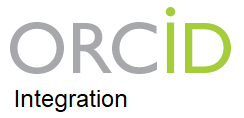Podocituria y preeclampsia
[Podocyturia and preeclampsia]Osvaldo Reyes1,2
1. Maternidad, Hospital Santo Tomás, Panamá, Rep de Panamá; 2. Miembro del Sistema Nacional de Investigadores (SNI), Panamá, Rep de Panamá;
Descargas
Resumen
El podocito es una célula altamente diferenciada localizada en la membrana basal del glomérulo. Entre sus múltiples funciones está garantizar la integridad y funcionalidad de la principal unidad de filtración del riñón, pero carece de la capacidad de dividirse bajo condiciones normales y en situaciones de estrés presenta el riesgo de separarse de la membrana basal, lo que conlleva la posibilidad de desarrollar proteinuria como primer paso de un daño renal que puede llegar a ser permanente. Una de estas situaciones de estrés es el embarazo y, en particular, los trastornos hipertensivos gestacionales, lo que coloca al podocito en la peculiar posición de poderse utilizar como prueba diagnóstica o como marcador de pronóstico renal a largo plazo. En esta revisión veremos el papel del podocito en estos escenarios.
Abstract
The podocyte is a highly differentiated cell located in the basement membrane of the glomerulus. Among its multiple functions is to guarantee the integrity and functionality of the main filtration unit of the kidney, but it lacks the capacity to divide under normal conditions and in stressful situations it presents the risk of separating from the basement membrane, leading to the possibility of developing proteinuria as the first step of renal damage that may become permanent. One of these stressful situations is pregnancy and, in particular, gestational hypertensive disorders, which places the podocyte in the peculiar position of being able to be used as a diagnostic test or as a marker of long-term renal prognosis. In this review we will look at the role of the podocyte in these scenarios.
Citas
[1] Zyan A. Renal Physiology. J. Interven. Nephro. 2022; 5(5): 66–69.
[2] Garg P. A review of podocyte byology. Am J Nephrol. 2018; 47 (Suppl. 1): 3–13.
[3] Pavenstädt H. Roles of the podocyte in glomerular function. Am J Physiology. 2000 Feb; 278(2): F173-F179.
[4] Satchell SC, Harper SJ, Tooke JE, Kerjaschki D, Saleem MA, Mathieson PW. Human podocytes express angiopoietin 1, a potential regulator of glomerular vascular endothelial growth factor. J Am Soc Nephrol. 2002 Feb;13(2):544-550.
[5] Trimarchi H. Mechanisms of Podocyte Detachment, Podocyturia, and Risk of Progression of Glomerulopathies. Kidney Dis. 2020; 6(5):324–329.
[6] Lenkkeri U, Männikkö M, McCready P, Lamerdin J, Gribouval O, Niaudet PM, Antignac C K, Kashtan CE, Homberg C, Olsen A, Kestilä M, Tryggvason K. Structure of the gene for congenital nephrotic syndrome of the finnish type (NPHS1) and characterization of mutations. Am J Hum Genet. 1999 Jan;64(1):51-61.
[7] Saga N, Sakamoto K, Matsusaka T, Nagata M. Glomerular filtrate affects the dynamics of podocyte detachment in a model of diffuse toxic podocytopathy. Kidney Int. 2021 May;99(5):1149-1161.
[8] Reiser J, Oh J, Shirato I, Asanuma K, Hug A, Mundel TM, Honey K, Ishidoh K, Kominami E, Kreidberg JA, Tomino Y, Mundel P. Podocyte migration during nephrotic syndrome requires a coordinated interplay between cathepsin L and alpha3 integrin. J Biol Chem. 2004 Aug 13;279(33):34827-32.
[9] Vogelmann SU, Nelson WJ, Myers BD, Lemley KV. Urinary excretion of viable podocytes in health and renal disease. Am J Physiol Renal Physiol. 2003; 285: F40-F48.
[10] Shankland SJ, Andrew DR, Kutz NJ, Pippin WF, Oliver W. Podocyte Senescence and Aging. Kidney360. December 2023; 4(12):1784-1793.
[11] Sun D, Wang JJ, Wang W, Wang J, Wang LN, Yao L, Sun YH, Li ZL. Human podocyte injury in the early course of hypertensive renal injury. World J Clin Cases. 2019 Nov 26;7(22):3698-3710.
[12] Cohen J, Vaiman D, Sibai BM, Haddad B. Blood pressure changes during the first stage of labor and for the prediction of early postpartum preeclampsia: a prospective study. Eur J Obstet Gynecol Reprod Biol 184: 103–107, 2015.
[13] Furuta I, Zhai T, Umazume T, Ishikawa S, Nakagawa K, Kojima T, Yamada T, Morikawa M, Minakami H. Effects of childbirth on podocyturia in women with normotensive, uncomplicated pregnancies. Am J Physiol Renal Physiol. 2017 Jun 1;312(6):F1112-F1119..
[14] Garovic V.D, Wagner S.J., Turner S.T. et al. Urinary podocyte excretion as a marker for preeclampsia. Am J Obstet Gynecol. 2007; 196: 320.e1-320.e7
[15] Craici IM, Wagner SJ, Bailey KR, Fitz-Gibbon PD, Wood-Wentz CM, Turner ST, Hayman SR, White WM, Brost BC, Rose CH, Grande JP, Garovic VD. Podocyturia predates proteinuria and clinical features of preeclampsia: longitudinal prospective study. Hypertension. 2013 Jun;61(6):1289-96.
Licencia
Derechos de autor 2024 Infomedic Intl.Derechos autoriales y de reproducibilidad. La Revista RevCog es un ente académico, sin fines de lucro, que forma parte de la Sociedad Centroamericana de Ginecología y Obstetricia. Sus publicaciones son de tipo ACCESO GRATUITO y PERMANENTE de su contenido para uso individual y académico, sin restricción. Los derechos autoriales de cada artículo son retenidos por sus autores. Al Publicar en la Revista, el autor otorga Licencia permanente, exclusiva, e irrevocable a la Sociedad para la edición del manuscrito, y otorga a la empresa editorial, Infomedic International Licencia de uso de distribución, indexación y comercial exclusiva, permanente e irrevocable de su contenido y para la generación de productos y servicios derivados del mismo.







